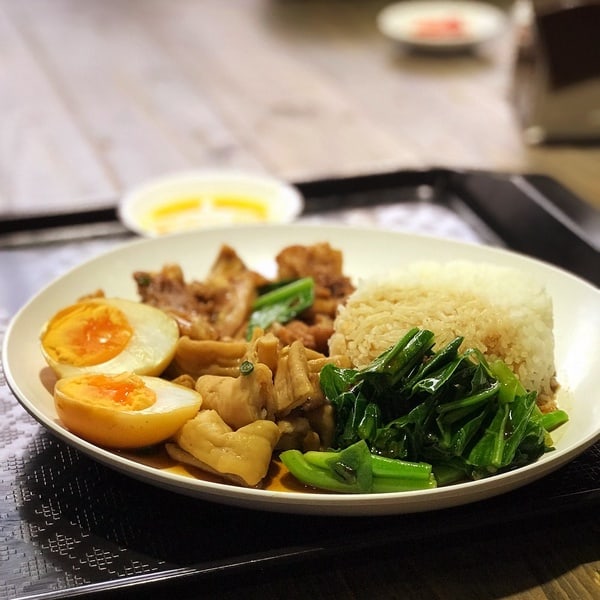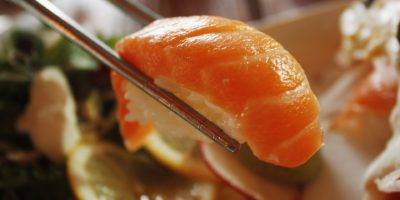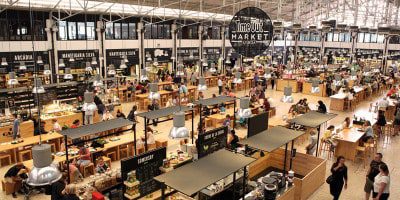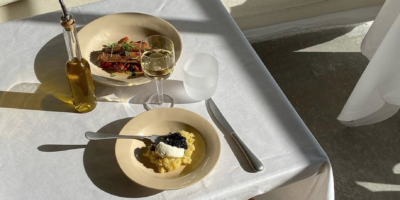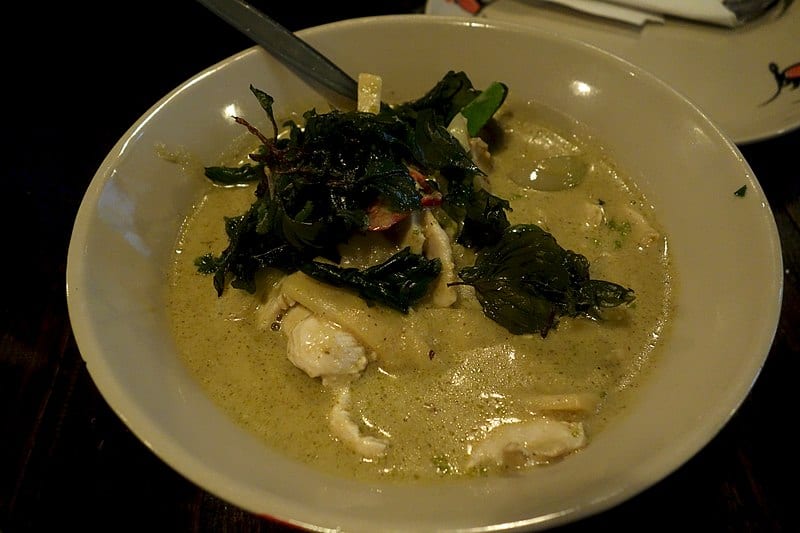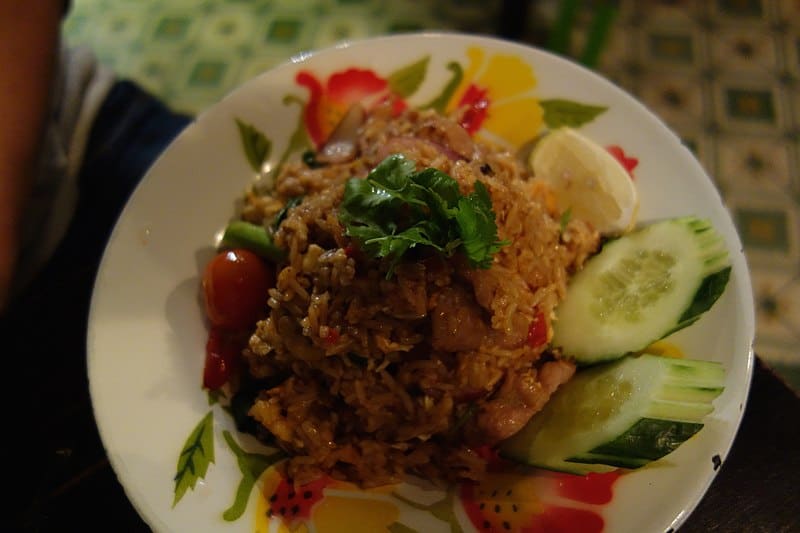Top Ten Traditional Foods to try in Bangkok
With its varying tastes and flavours throughout the different regions of the country, the cuisine of Thailand’s does have a wide degree of diversity. There can be considerable differences between the culinary efforts and ideas of the different geographical points of north, south, east and west throughout the nation, with dishes changing in colour, flavour, and of course degree of spiciness according to area or even province.
Particular examples of this are the Northern, North-eastern, and Southern dishes that have been incorporated as staples into the food of the central region.
The nation’s capital Bangkok, which is the largest city in Thailand and so a veritable melting pot of different culture and cuisine, encompasses this diversity wholeheartedly, yet the city also boasts its own distinct versions of much Thai traditional food.
Influences in the food of Bangkok come from all areas of Thailand, as well as other countries such as China, India, and Malaysia to some degree.
There is also a distinct sweet vein apparent in much of the available food in Bangkok, with many of the dishes that also include meat or fish containing coconut milk and palm sugar. This is related to the fact that these have always traditionally been common ingredients in the central regions of Thailand.
Also, the with the sea having always been easily-accessible due to the flow of the Chao Phraya River through the city, there is an abundance of seafood apparent in many traditional dishes available in Bangkok.
The Chinese connection to some of the Bangkok food is related to immigrants, mainly from Southern China, bringing in elements like the wok and its ‘flash frying’ method of cooking, along with various noodle and rice dishes.
The Muslim influence is also apparent in some of the traditional food of Bangkok, influenced by not only Southern Thailand and its dishes but also other visitors and immigrants from surrounding regions such as Malaysia and Indonesia who would have been responsible for introducing the meat- and dried-spice-based cuisine, along with various curries, that eventually all made its way to Bangkok to form part of the local menu.
Obviously with Bangkok having been the capital city for the last couple of hundred years or so, another significant factor that has affected the cuisine is related to The Royal Court, which has been renowned for its particularly refined and somewhat more sophisticated takes on traditional Thai dishes since the establishment of the new capital and beyond.
So let’s take a look at some of the most popular traditional foods to try when in Bangkok.
1. Tom Yum (hot spicy and sour soup)
So let’s start with some of the favourites and standards. Everyone who has ever set foot in a Thai restaurant in their own country has probably tried, or at least heard of Tom Yum (usually Tom Yum Goong – with large shrimps).
With its standard ingredients of lemongrass, kaffir lime leaf, lime juice and a variety of other strong Thai herbs such as galingale (and sometimes ginger) tom yum has a particular tang. This is added to by the fresh chillies and chilli paste to facilitate the spice.
Tom yum is a dish that is available just about anywhere in Bangkok, and however its degrees of spice and tang vary, you can bet it won’t taste the same as back home in the local Thai restaurant.
There are many ingredients that could be added to the basic Tom Yum formula, such as various meats, fish, seafood, shrimp, or just a mix of all (Tom Yum Ruam) if you are particularly hungry.
One version will have coconut milk, and another version just hot water, so if you have a preference you should try to highlight it. If the restaurant has English-speaking staff who are used to foreigners they may ask anyway which one you would like – but the coconut milk version definitely adds more ‘heartiness’ to the soup.
2. Pad Thai (Thai stir-fried noodles)
Image by Stu Spivak sourced from wiki media commonsPad Thai is another well-known Thai dish that can be found pretty much anywhere. The ingredients may vary slightly between different restaurants and vendors, but like Tom Yum it is considered a ‘national dish’ in some ways and hence is a Bangkok staple.
Although there are many varieties and qualities of noodle shops and vendors in Bangkok, Pad Thai is most commonly found as a street food dish. It is comprised mainly of stir-fried Thai noodles (white rice noodles) and is often made with some or all of the following additions: beansprouts, chopped peanuts, shallots, tofu, prawns, egg, and tamarind sauce.
The result is a dish of many delightful flavours including the familiar sweet, spicy, and tangy citrus elements common to much traditional Thai food.
3. Kah Moo (Braised Pork Leg)
Braised pork leg and rice is another Bangkok ‘staple’ and is found in restaurants, food courts, and from street vendors alike. This is one of the dishes featured here that comes with something of a Chinese heritage.
Image sourced from creativecommons.org
The pork is tender and soft, braised in a sauce that is quite sweet, and is often served with boiled eggs and a side garnish of raw garlic and small green chiliies (known as ‘prick kee noo’ in Thai — mouse poop chilies!) which, do be warned, are likely to be some of the spiciest you’ll find – and all of these flavours together is what makes this dish so delicious.
Just one point – this traditional Bangkok dish is often served with the skin and fat of the pork in quantities more than may actually be desired – sometimes at the expense of the actual meat – so try your best to indicate that you don’t want the skin fat (‘pew’) when ordering if this is the case.
4. Pad Kra-pow (Stir-fried with basil)
‘Kra-pow’ (Thai basil) is a type of herb commonly found and used in much traditional Thai cuisine. It is the main flavour-giving ingredient of this particular dish, along with varying degrees of chillies and garlic, according to the restaurant or vendor.
One of the main varieties of the dish is ‘Kra-pow Moo Sap’ (stir-fried basil and chilies with minced pork) although it can be ordered with pretty much anything, with other common variations being chicken, fish, prawns, fish, beef – even tofu for non-meat eaters.
The meat (or whatever else) is stir-fried with the basil leaves and served on top of rice, usually with a fried egg on the side. This dish can get pretty spicy, although some vendors do occasionally take it upon themselves to omit the chillies entirely when serving foreigners, according to the stereotypical idea that many Thais still surprisingly harbour – that ‘foreigners can’t eat spicy’ (!).
Spicy in Thai is ‘pet’ – so one thing that might be useful if you find yourself in Thailand ordering food is to clarify the following when ordering: mai pet (no chillies); pet nit noy (a few chillies/a little bit spicy); or if you dare – pet (spicy)!
5. Khao-Pad (Fried Rice)
Thai Fried Rice dishes are a typical variety of Central Traditional Thai Cuisine. The difference between this and any other Asian-style fried rice dish is largely due to rice itself. Thai Jasmine rice (Khao Soo-ay) is in some ways unique, which is why it is exported all over the world. It is shorter-grained and less glutinous than some other types of rice grown or used in Asia.
Again fried rice is something that is available pretty much anywhere in Bangkok as it is easy to make, and comes in any variation you like – just select your required main ingredient, whether it be chicken, fish, vegetables, pork, beef, tofu or squid – and voila! It gets quickly flash-fried along with the rice, egg, and sometimes a small portion of some kind of vegetable according to what is available.
Served topped with a fried egg if required (kai dao), and usually garnished with lime and a few spring onions, ‘khao pad’ is a regular ‘go-to’ traditional dish for many Bangkokians.
6. Khao Mun Gai (Steamed Chicken and Rice)
Although it is a little-known fact even among many Thais, this is another Chinese-influenced dish that originates from the Chinese island of Hainan. Along with Khao pad and Pad Kra-pow, this dish is one of the favourite ‘convenience’ dishes that many Thais may be inclined towards for lunch.
The dish is actually considered to be quite high in calories as the chicken is steamed above the rice, allowing its fat (mun) to add flavour and texture to the rice. The rice is soft and not overly oily though, and retains the fragrance of the chicken. Often served with a delightful dark sauce containing varying degrees of ginger, chillies and garlic (in a separate small dish) and a clear soup, this is also a relatively inexpensive option.
7. Khao Mok Gai (Chicken Biriyani Rice)
A close cousin of Khao Mun Gai, with influences originating from other regions now adding to the flavour, is Khao Mok Gai , another traditional Bangkok staple. It is commonly (but not always) sold nearby the steamed rice version.
Also sometimes sold labelled as Biryani or spiced rice, this is a dish influenced by the Muslim world, a large population of which exists in Thailand (traditionally in the Southern regions). In Bangkok the dish is typically made with chicken and is served with a sweet-and-sour sauce, a bowl of clear chicken soup, and is topped with crispy fried onions.
Easy to identify from the turmeric-dyed bright yellow rice, this dish is most commonly found with vendors selling other food inspired by similar regions such as Masaman curry and other types of spicy curry typical of Southern regions and their neighbouring countries.
Usually priced around the same as Khao Mun Gai and widely found in similar places such as streets, food courts and inexpensive restaurants.
8. Som Tum (Papaya Salad)
This traditional rural North-eastern dish is just one of many from regions other than the central one of Bangkok that has become standard fayre in the capital city.
Made from thin, crunchy strips of green, unripe papaya mixed with tomatoes, green beans, chilies, garlic, tamarind, and a host of other ingredients according to taste — such as sugar, peanuts, lime, and fish sauce — all ground together with a mortar and pestle. Originally introduced to Bangkok by migrant labourers, this traditional dish became very popular among city-dwelling Thais due to its spicy hit.
Available from street vendors all over the city, along with standard Thai restaurants, and northeast inspired ones who usually offer a much wider selection of different somtum options.
TIP: Beware of the ones containing the rather pungent ‘pla raa’ (fermented fish) which is something of an acquired taste even among locals.
9. Gaeng Keeow Wahn (Green Curry)
This exotic looking traditional Thai cuisine is relatively easy to find in most (if not all) restaurants in Bangkok. Another ‘go-to’ standard dish of the central area in many ways, this serves more as a dinner option for many people, although in Thailand it is not actually that uncommon for some people to have this for breakfast!
The exotic colour of this dish comes from the chili paste that is used as a base and infused into the coconut milk and is actually derived from green chillies. The green curry is made with a sweetness that works perfectly with the underlying spiciness by way of combination and contrast (as does much Thai food).
Also made with a mixture of flavoursome Thai herbs and usually eggplant, the dish comes according to taste in terms of the main ingredient – whether that be meat or otherwise – but most commonly Gaeng Keeow Wahn is made with chicken.
10. Gaeng Penang (Penang Curry)
The name of this red curry gives some clue as to the nature of its origin – Penang being an island in the neighbouring country to the South of Thailand, Malaysia.
Obviously this dish would have originally have made its way down via the South of Thailand, and it is, in some ways quite similar to green curry.
The difference is in the chili paste used as a base in that the chillies it is made from are red, and the degree of spiciness is slightly less apparent than green curry once it is mixed with the coconut milk. And rather than using eggplant as the vegetable ingredient, this red curry uses pea eggplants and peanuts, and is usually made with pork or beef.
Planning a trip to Paris ? Get ready !
These are Amazon’s best-selling travel products that you may need for coming to Paris.
Bookstore
- The best travel book : Rick Steves – Paris 2023 – Learn more here
- Fodor’s Paris 2024 – Learn more here
Travel Gear
- Venture Pal Lightweight Backpack – Learn more here
- Samsonite Winfield 2 28″ Luggage – Learn more here
- Swig Savvy’s Stainless Steel Insulated Water Bottle – Learn more here
Check Amazon’s best-seller list for the most popular travel accessories. We sometimes read this list just to find out what new travel products people are buying.

